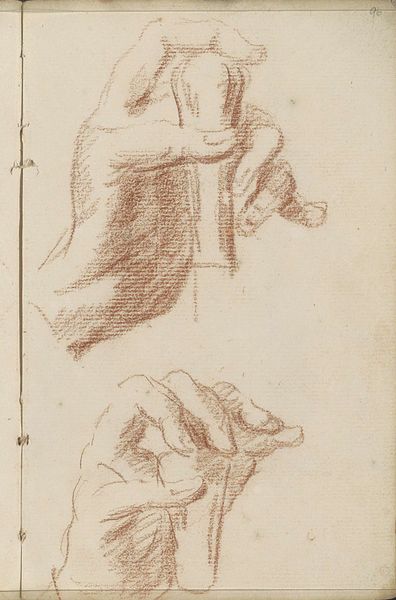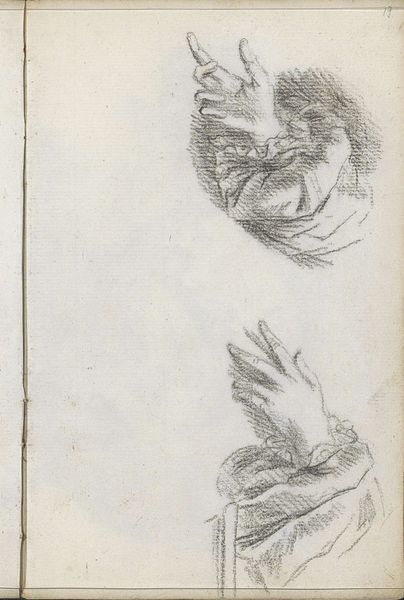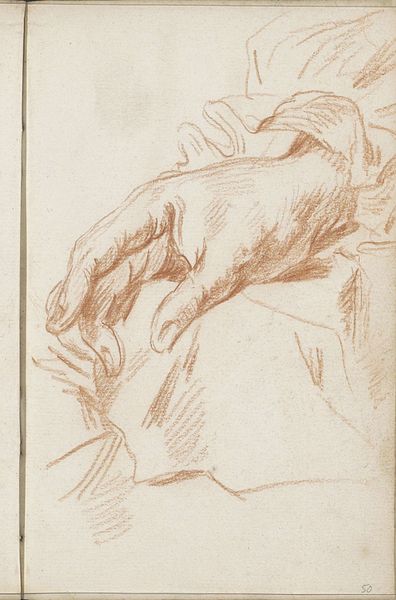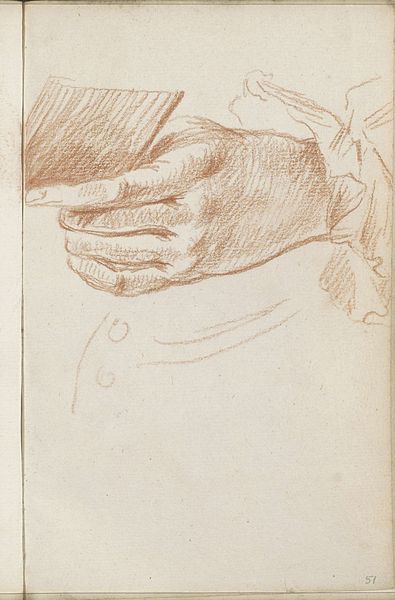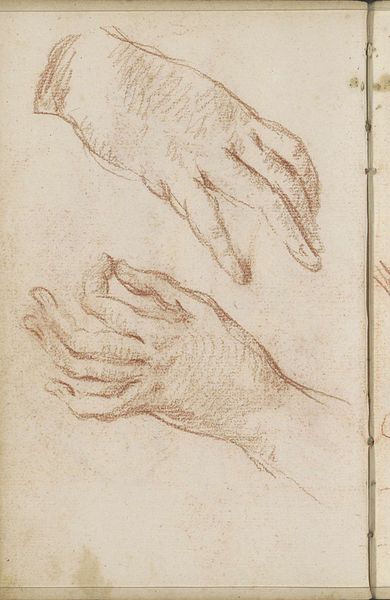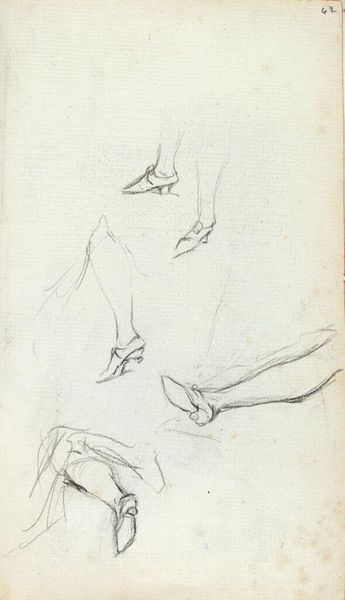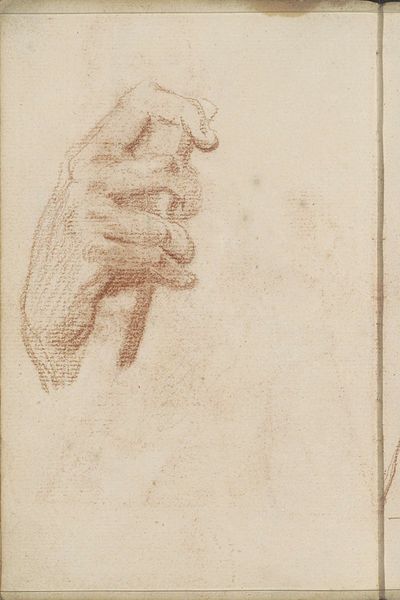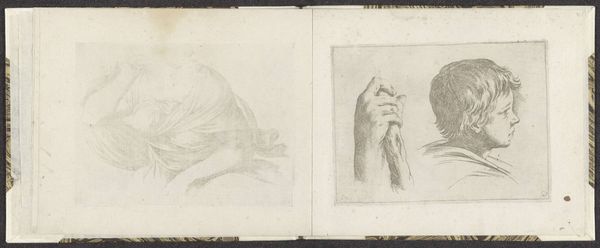
drawing, paper, pencil
#
portrait
#
drawing
#
pencil sketch
#
paper
#
form
#
pencil
#
sketchbook drawing
#
realism
Copyright: Rijks Museum: Open Domain
Petrus Johannes van Reysschoot rendered these studies of hands holding a walking stick with sanguine chalk. The hands, clasped firmly around the cane, suggest reliance and support, symbols deeply rooted in human experience. The walking stick itself transcends mere utility; it embodies guidance, authority, and the journey of life. Think of the scepter of a king, or the staff of a shepherd. We see these motifs echoed through time, from ancient Egyptian art to the Renaissance. Consider the subtle shift: the scepter symbolizes power, while the shepherd’s staff evokes care. Here, the walking stick speaks to the human condition. It becomes a potent emblem of aging, wisdom, and the support we seek as we navigate life’s path. The grip of the hand, the posture of the fingers—each element contributes to a powerful psychological narrative of dependence and resilience, engaging us on a subconscious level. This is a symbol of our shared, cyclical journey.
Comments
No comments
Be the first to comment and join the conversation on the ultimate creative platform.
